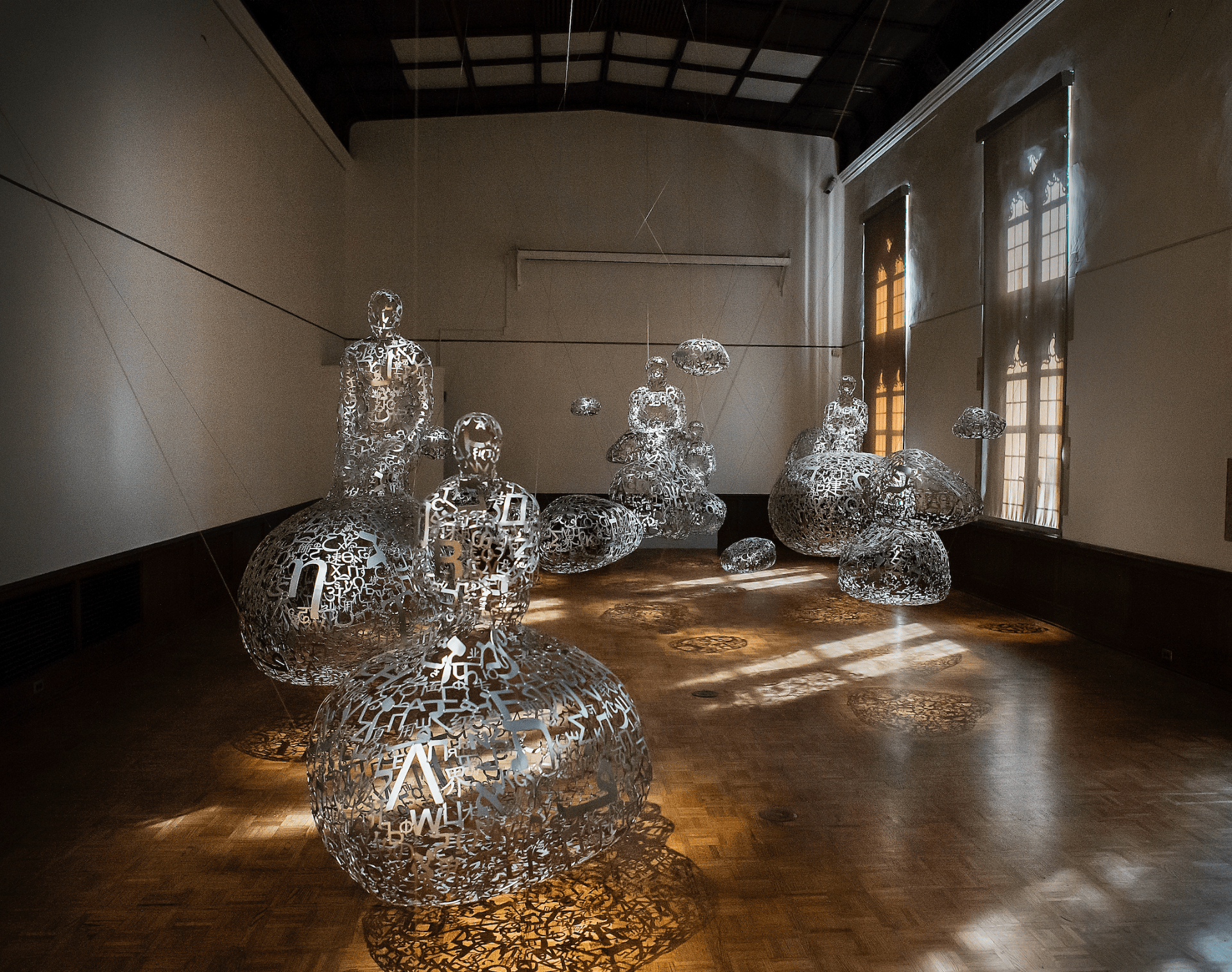Jaume Plensa: Talking Continents at the Arthur Ross Gallery
The Arthur Ross Gallery’s current exhibition is Jaume Plensa:Talking Continents. This is a traveling exhibition, and Plensa’s sculpture was first exhibited at the Madison Museum of Contemporary Art in 2017. Plensa was born in Barcelona, and much of his work has involved the idea of unifying individuals through bodily and spiritual connections. Though this exhibition features 19 collective floating sculptures in the gallery space, Plensa is also widely known for his public works, his most famous being Crown Fountain (2004) in Chicago’s Millennium Park.
Talking Continents is comprised of 19 stainless steel sculptures that embody cloud like structures with five of them supporting seated human forms. The artist explains that the five figures represent the five most populated continents, in conversation with each other. The sculptures are formed from die-cut steel letters from eight different alphabets: Arabic, Chinese, Cyrillic, Greek, Hebrew, Hindi, Japanese, and Latin. A clear dichotomy exists between the heavy, industrial material and seeming weightlessness of the structures. When you walk into the Arthur Ross Gallery, these 19 structures occupy most of the rectangular room. Visitors are instructed to walk around the perimeter of the sculpture and look closely at the letters which comprise the forms. On the wall near the entry, visitors are confronted with a captivating quote: “I always thought an alphabet is the most precise portrait of one culture. For years and years and centuries and centuries, they are corrected and corrected until the picture is exactly representing the behaviors and spirit and traditions and backgrounds of a culture. – Jaume Plensa.”
It is clear to me that this exhibition is about the possibilities (and limitations) of intercultural communication and cooperation. Plensa makes an alphabet and a language a way to both recognize the potential for dialogue with others and a barrier to understanding others. The letters purposely do not come together to form coherent words or sentences but are instead the breakdown of communication that possess the ability to be reconstructed into words. A detail that I immediately noticed is that the five figures do not having facial features. The letters break off near their faces, leaving empty voids in their place. I think this gesture by the artist leaves us with two possible readings: the figures represent humans of a “blank” identity, putting all cultures on the same stage regardless of outward differences, or that the voids deny the figures the ability to communicate verbally with each other, further pulling our cultures apart. Representatives of the artist call upon the idea that Plensa is encouraging us to think about a collective humanity and inward reflections, but I think the solitude of the figures in this space invites another reading as well. Talking Continents asks its viewers many questions but doesn’t necessarily provide the answers. Instead, it leaves itself open to countless interpretations and allows viewers of diverse backgrounds and experiences to meditate upon what it means to connect with others.
The Arthur Ross Gallery was added inside the University of Pennsylvania’s first library building in 1931. It was constructed in Venetian Gothic style, and the elaborate molding around the windows and ceiling make the space feel historic. In contrast, Plensa’s sculptures bring in a new contemporary aura and invite a healthy tension between the architectural site and the artwork. The dark space and dramatic spotlights are further contrasted by the natural light pouring through the elaborate windows. Drawing upon what we learned at the Biennale, it is interesting to view these sculptures inside a space they weren’t originally intended to occupy, but nonetheless transform.
Reese Berman

